Quality Assurance Plan [QAP]: Definition & Outline


Ensuring good quality of products and services is crucial for companies in all kinds of fields. Poor quality products may result in huge financial losses or even total product failure on the market. According to the research of Consortium IT Software Quality, the estimated total cost of poor-quality software that was canceled, failed, or found no widespread use was about $2.84 trillion in 2018 in the USA only. Addressing the software quality issue increases the chances that money you invest in the software will not be lost.
Besides, the satisfaction of your customers depends on the product quality and, in turn, your brand’s reputation as well. For cloud-based products like SaaS applications user satisfaction is a goal with assigned priority. But how can you ensure high quality at all times? We know that the backbone of quality products is testing. However, we can improve the quality even more if we prepare a Quality Assurance Plan. We gathered everything you need to know about QAPs and how you can start creating them yourself.

What Is a Quality Assurance Plan?
A Quality Assurance Plan or QAP is a type of document which is created and used to ensure that the finished product or service meets the criteria outlined beforehand and thus maintains high quality. In other words, a QAP can help businesses set up a unified list of requirements for their products and then have a specific set of actions that must be performed to meet those requirements or criteria. Creation of Quality Assurance Plan is a part of software quality assurance and testing services.
In most cases, the criteria or requirements for the quality of the product or service are not only the ones based on customer needs but also the ones based on business goals and needs. The Quality Assurance Plan is meant to guide the project team during the process of creating a product while also helping the team monitor, assess, and report on its quality. Thus, a QAP can be used to report to senior management about the quality of the product being made and the progress of the project team.
A crucial aspect of using a QAP is Quality Assurance or QA which includes the activities that help assess how well the product or service complies with the predefined quality criteria, requirements, or standards. It’s crucial to keep in mind that QA is not the same as Quality Control or QC though both are used with QAPs in different ways. While QA aims to prevent issues, QC is used to identify the said issues if they arise (e.g. product defects).

What Are the Advantages of Using a Quality Assurance Plan?
As already explained, a Quality Assurance Plan is used to ensure the high quality of the end product or service. However, using a QAP comes with a number of other advantages, including:
- Streamlined Production: A Quality Assurance Plan allows companies to better organize their processes and streamline production for huge enterprise systems. In a way, having a QAP allows you to make your processes leaner by stripping away all the unnecessary parts and focusing on the essential aspects of a specific project. In practice, this means that your project team will have better control over the process and will be more engaged as a result. Moreover, there will be an internal system of checks and balances that will help ensure the quality of products or services being created. All the audits can run more smoothly too.
- Improved Resource Management: Another reason why using a Quality Assurance Plan is beneficial for your company is that it improves asset and resource management. Along with the Software Requirements Specification document that is prepared during the Discovery Phase, Quality Assurance allows businesses to save both time and money by preventing issues before they happen. Moreover, there are opportunities for saving time and money when creating the QAP itself. You can outsource its creation by hiring a professional writer from the writing services reviews site Best Writers Online who will make your QAP for you. By using a Quality Assurance Plan, your project team becomes more focused on efficiency and productivity which helps make better decisions regarding the available resources. Through better resource management, you can also promote innovation, achieve higher levels of accountability, and empower your employees.
- Acknowledgment: Using a Quality Assurance Plan can help a business acknowledge the importance of its own employees. It stimulates creativity and encourages collaboration among the members of the project team. There is a higher degree of self-reflection and a bigger focus on project goals. While the human factor is not always as important as the technical aspects of a specific product, it is still essential for the success of the project at large and for the quality of the end product or service.
Why Is a Quality Assurance Plan Important for Software Companies?
As you can see, there are quite a few advantages associated with using a Quality Assurance Plan. Of course, a Quality Assurance Plan can be used in different contexts, but why exactly is it so important for software companies? Here are just some things to consider:
- Your team will adopt QA principles as a part of the end result rather than a part of their job. In other words, by using a QAP you make it an integral part of your project team’s work which encourages your team to think about their tasks as a way to solve problems rather than get to another checkmark. The motivation comes from the expected results.
- Your company will have a more positive environment for your employees to prosper. A Quality Assurance Plan is perfect for setting up goals and defining the way in which they will be achieved. Thus, employees better understand what their roles are and are more motivated to work hard because they know what end result they are aiming for.
- You will get a better idea of what your mission is and how you can accomplish it. It may not seem obvious but having a QAP can help you stay true to your business goals by providing your customers with the kinds of products they are looking for. Likewise, a Quality Assurance Plan can help you remember your core business values and maintain them in your team (e.g. a culture of collaboration and teamwork).
- Your brand will have a more loyal customer base. When you continue providing your customers with high-quality products, they will stay loyal to you and will truly value the software you are providing them with. This, in turn, will improve your brand reputation and will keep your customers satisfied.
- You could suffer from long-term consequences if you don’t implement Quality Assurance into your strategy. For instance, you could potentially start losing customers if there are much better alternatives to your products or services. As a result of losing customers, you will start losing revenue.

Example Outline of a Quality Assurance Plan
Before you start working on your app or program, it’s important to understand what a Quality Assurance Plan looks like. Experienced quality assurance providers such as SumatoSoft offer services to help you with quality assurance both during the software development and when the product is launched. If you still want to create a QAP by yourself, you will need to understand what its key components are and why they are important. A typical Quality Assurance Plan includes:
- General Information: This includes the purpose and scope of the project as well as a general overview of the said project. Any references and points of contact should also be added.
- Schedule: This is the schedule or timeline of the project with all the tasks and responsibilities as well as who performs them.
- Documentation: This includes any kind of documentation related to the project such as system documentation, documentation by phase, etc.
- Auditing Guidelines: These are the guidelines used for testing the product as well as reviewing and auditing the project. Usually, the key components are the review process, the audits, the testing process, and the metrics used.
- Correction Guidelines: These are the guidelines for problem reporting and corrective action that happens after the auditing. Any relevant documentation and report metrics are included.
- Tools: These are the tools and controls used throughout the project as well as any additional resources that are needed.

FAQ
How Do I Create a Quality Assurance Plan?
The process of creating a Quality Assurance Plan can seem challenging at first, but once you understand its components, it will no longer be as difficult. In fact, the more often you create and use QAPs, the better you will understand how to make a good one that will keep your project team on track. Without further ado, here are the steps you should follow to create your very first Quality Assurance Plan:
- Outline Your Quality Objectives: The first step is to outline or define your quality objectives for a specific project. As mentioned earlier, these will depend both on the needs of your customers and on your business needs and goals. It’s a good idea to use the SMART approach to define your quality goals – Specific, Measurable, Appropriate, Realistic, and Timely. You need to be precise with your quality criteria to ensure that they are clear and measurable. Keep in mind any government regulations and policies or industry standards that influence the quality of your product or service.
- Assign Roles to Team Members: The next step is to assign roles to the project team members. Everyone should know what their responsibilities are and what is expected of them. In some cases, employees will need to be trained beforehand to be able to perform the tasks they are responsible for. Your team needs to be able to identify any potential issues before they arise, so there needs to be a clear understanding of what each employee should be focusing on as a part of their job. This way, most mistakes can be avoided while difficult situations will be handled properly.
- Finalize the Quality Assurance Plan: Now that the two most important aspects of your QAP are ready, you can finalize the plan. Remember to use the outline provided earlier, but don’t be hesitant to make any adjustments to it if you deem it necessary. Because this is your first time creating a QAP, it’s okay if you make mistakes or forget some things. In the future, you will be able to determine what went wrong and take into account these details when creating new QAPs for future projects.
- Implement the Quality Assurance Plan: Once your team begins working on the project, they will have to start implementing the QAP in practice. Ensure that everyone is on the same page and is performing their responsibilities. Everything planned out in the QAP needs to be done in practice now. Once again, if there are any mistakes at this stage, it’s important to remember about them to avoid them in the future.
- Assess Results and Make Adjustments: Finally, the project is complete and the product or service is ready. At this stage, you need to assess the results of the project as well as the results of the QA you were performing when implementing your Quality Assurance Plan. Keeping all details in mind, you need to make the right adjustments to your QAP in case you will be using the same plan for other projects. If you want to create a new Quality Assurance Plan for a different project, you should also keep in mind the lessons learned from this case. Remember that this is a continuous process and your current results should always be influencing your future plans.
Who Should Create a Quality Assurance Plan?
In most cases, the Quality Assurance Plan is created by the project team working on a specific product or service. The team usually has at least one person who understands which industry standards must be met (quality, safety, etc.) as well as specialists who understand the product or service itself. However, there are some cases when the project team doesn’t necessarily have to create the Quality Assurance Plan on their own.
For example, if a company is short on resources or doesn’t have a person who has enough expertise and experience to create a good Quality Assurance Plan, the company might decide to outsource the process. In this case, you can hire a professional writer from the custom writing reviews site Writing Judge to create the QAP for you. Outsourcing the process this way can help reduce expenses and save time while ensuring that the Quality Assurance Plan is as useful as possible.
What Are the Most Common Types of Quality Assurance Plans?
There are no specific types of Quality Assurance Plan but rather the purposes these plans are created for. For instance, one company might choose to create a Quality Assurance Plan to use while creating a new product line. A different company might need a QAP to set up a particular process (e.g. order delivery) or department (e.g. customer support team).
Obviously, depending on the purpose of the Quality Assurance Plan, its key elements can vary. That being said, most Quality Assurance Plans are still used for the primary purpose of ensuring the high quality of a product or service. In software development, a Quality Assurance Plan will help the project team in creating the best version of the program and application that is being developed.
Conclusion
As you can see, using a Quality Assurance Plan can be the most appropriate solution for you to ensure high quality at all times. Project teams should start integrating Quality Assurance Plans to help them stay on track. Use the tips in this article to help you understand how to create a Quality Assurance Plan and start creating them for your projects.
Let’s start
If you have any questions, email us info@sumatosoft.com



